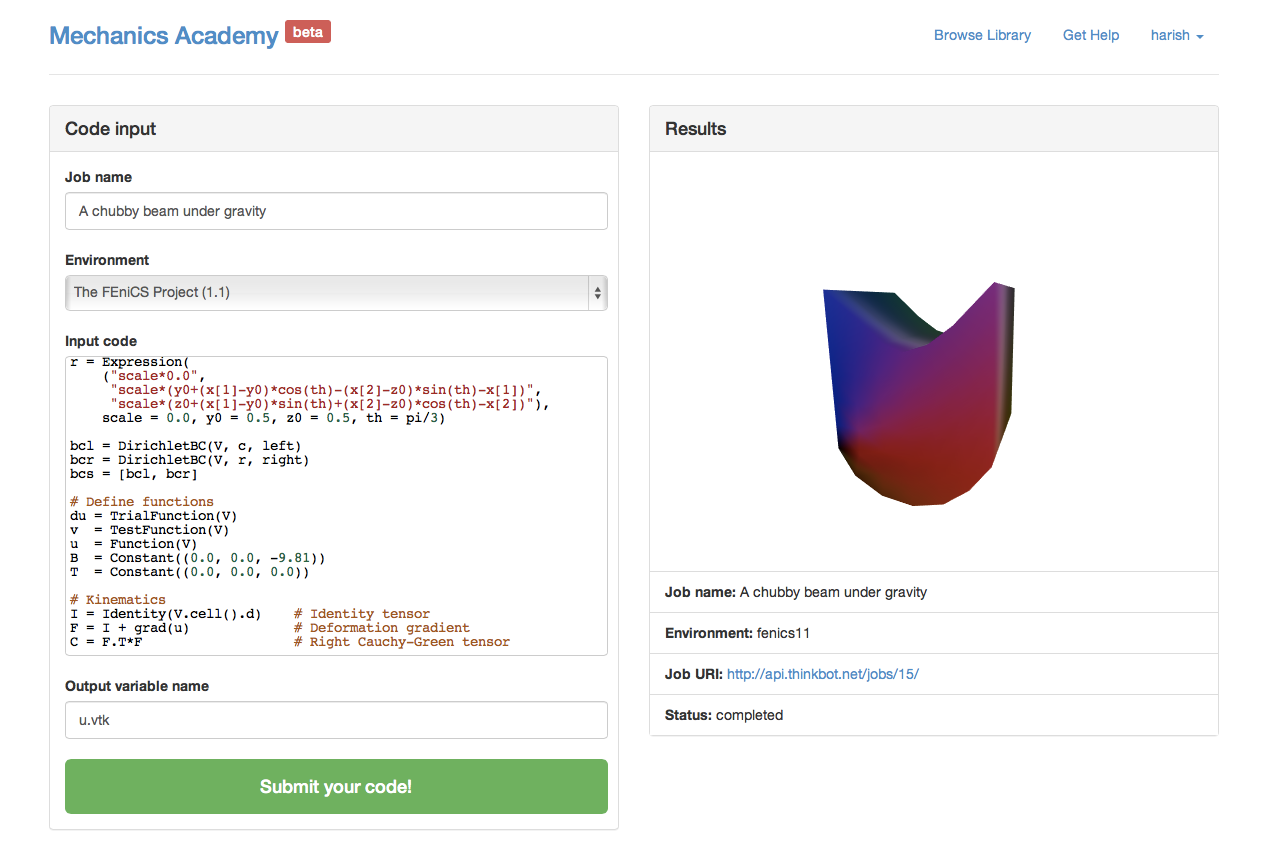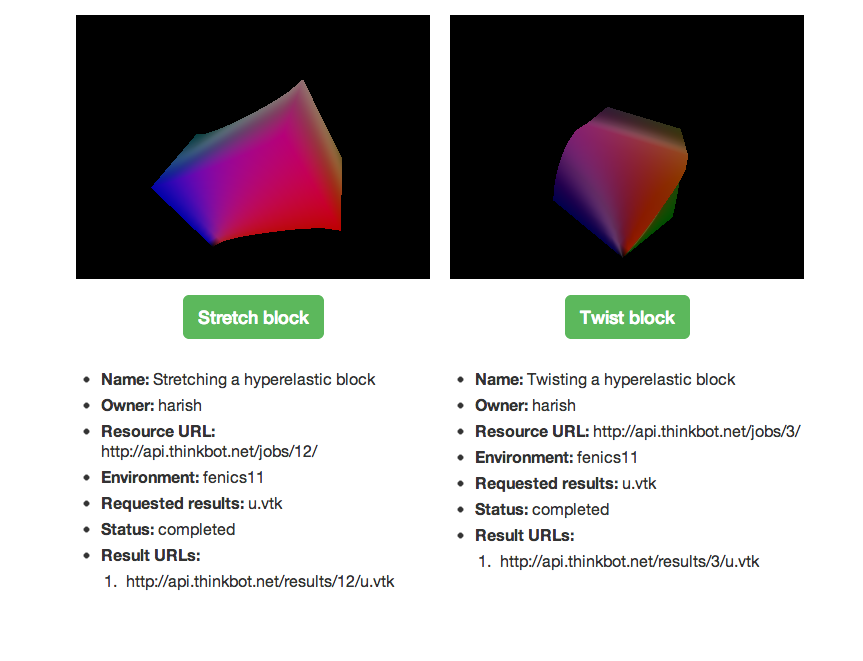thinkbot has been a labour of love of mine for some years now. Since it’s currently being rebuilt from scratch (as it often seems to be), I am going to leave you with a story instead of pointing you to something you can play with.
The idea for the project began at a simple place: To make a tool that allows people to easily solve differential equations online.
The motivating utility of this tool was to allow students to simulate simple mechanical systems right in the browser. I wanted them to be excited to learn concepts in mechanics, and teach students practical skills in computational science along the way.
As I worked on the idea, thinkbot morphed into a general purpose API to solve a set of mathematical problems in Python, Octave and R. This API served as the computational backend of a mechanics education site called Mechanics Academy.

It also served as the backend to a numerical simulation component built for the edX Platform.

At some point I even wrote an iOS app as a client!
As I’ve gone through all this experimentation, my vision for the project has morphed yet again. But this time, it’s starting to feel fully formed. What follows is a bit of a manifesto for the next incarnation of thinkbot.
At its core, thinkbot will be a platform that allows computational scientists to easily package and run their code on the cloud. This makes high performance computing a commodity, and has obvious implications for the reproducibility and collaborative evolution of computational science.
The project will be developed in the open, and released under a liberal open source license. It will have a strong code of conduct that encourages a helpful, inclusive and kind community around it.
thinkbot’s technical design is heavily inspired by projects like Deis and openshift, and will leverage Kubernetes at its core. Atop this core platform, there’ll exist a general purpose REST/RPC/WebSockets layer that easily allows for things like iOS UIs.
It’ll be awesome, and I’m excited.